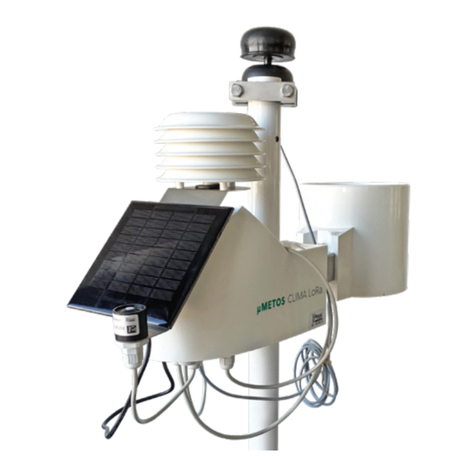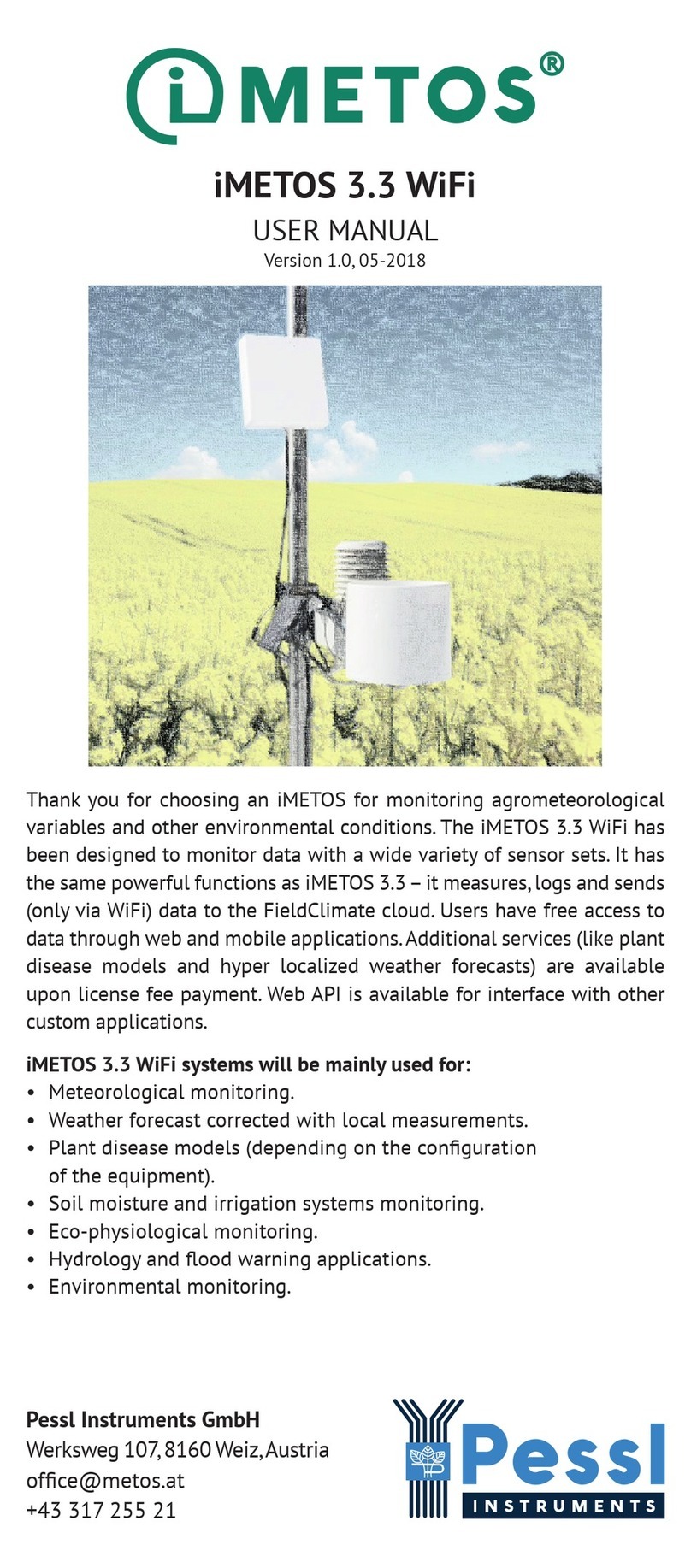
iMETOS RadioNode extended user manual 3
Thank you for choosing an iMETOS for monitoring soil moisture data and agrometeorological variables.
iMETOS RadioNode is a small, wireless, battery powered datalogger for in-eld measurement of soil mois-
ture, temperatures, rain, ow rate, leaf wetness, relative humidity and other parameters. iMETOS RadioNode
sends all sensor readings in real time through an interactive star network back to our base station. From the
iMETOS base station the data is uploaded to the web via cellular network (GPRS, Edge, UMTS, CDMA, WiFi). All
data is available through FieldClimate platform.
Users have free access to data through web and mobile applications. Additional services (like plant disease
models and hyper localized weather forecasts) are available upon license fee payment. Web API is available
for interface with other custom applications.
iMETOS RadioNode systems will be mainly used for:
• Meteorological monitoring
• Soil moisture and irrigation systems monitoring
• Weather forecast corrected with local measurements
• Plant disease models (depending on the conguration of the equipment)
• Hydrology and ood warning applications
• Environmental monitoring
• Frost warning via SMS
1. YOUR iMETOS RadioNode
To install iMETOS RadioNode, you will need an RF Internal Wireless Access Point PCB (AP) and an RF Sensor
Device PCB (SD). The Radio wireless AP is connected to the iMETOS 3.3 through extension connector and is
powered directly from the battery of iMETOS 3.3. This internal wireless AP controls the network that iMETOS
RadioNodes are peered to.
The iMETOS RadioNode consists of a white plastic case containing the electronics, the battery and the RF
Sensor Device PCB (SD). Each RadioNode SD is powered by 3.6V Lithium battery (19000 mAh) or by 6V battery
(4.5 Ah), has a built-in PCB antenna and can support many sensors (see below). You can connect up to 16 ra-
dio nodes to the main station with a star topology. The expected operating range is 300 to 400 meters (1200
to 1400 ft.) at +14 dBm. By line of sight, when mounted on level ground at least 3 m (10 ft.) high and above
crops, grass, bushes or foliage, it can reach more than 1000 meters.
Picture: 2 iMETOS RadioNode variations (with
and without solar panel); 1. Solar panel; 2. Body
containing a sensor device PCB and a battery.






























